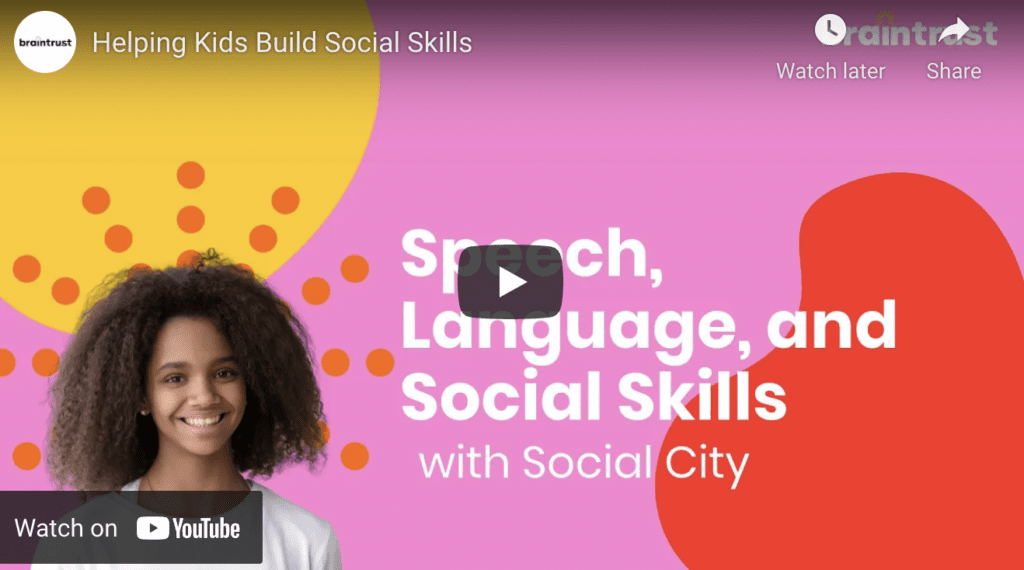
The road to reading fluency is a long one, and every step is crucial. That’s because each skill builds upon the one before it. That’s why it is so important to build strong foundational reading skills. Each step forward lays the groundwork for the success that is sure to follow! As the saying goes, “first students learn to read, and then they read to learn.” That is why academic success is so closely tied to reading fluency!
Early Literacy Skills
Children begin to develop literacy skills just shortly after birth. It’s hard to believe, but it is true! Their introduction to the concept of spoken language starts with the sounds of their parents’ voices. Shortly after, babies will realize they are able to communicate (i.e. cry) and get a response. Over the first twelve months of a baby’s life, the books they see and tales they hear plant the seed of an understanding of print and story structure. Kids learn to hold a book right side up, to open it and turn the pages, and to make up their own stories as they look at the pictures.
At home: Give your pre-reader plenty of exposure to books with pictures, and make sure you read to them often! Through these early reading experience, children learn to love books.
Phonological Awareness
Next, kids begin to develop phonological awareness. This kicks in around the time they enter Pre-K. Phonological awareness refers to the broad concept that words are made up of sounds, that there are relationships between certain sounds, and that these sounds aren’t random. Once children have phonological awareness, they can begin to play rhyming games or create silly sentences with beginning or ending sounds.
At home: Songs offer a fantastic way to introduce or reinforce phonological awareness. The rhythmic patterns and rhyming words in music are excellent tools to build phonological awareness.
Phonemic Awareness
Simultaneously, kids should also build phonemic awareness. Considered a sub-category of phonological awareness, phonemic awareness is a child’s ability to identify, manipulate, and produce individual sounds in words. Ultimately, students who have limited phonological and/or phonemic awareness will struggle with both decoding (reading words) and encoding (spelling words). That is why it is so important to work on these early pre-reading skills!
At home: Play simple games with your child that focus on manipulating and exploring the sounds in words. These might be rhyming games (man – fan) to highlight ending sounds. You can also explore silly sentences to play with alliteration (Sally sells seashells by the seashore). Lastly, blending activities will build an awareness of each sound (aka phoneme) in a word (/b/ /e/ /ll/ – bell).
Phonics
After that, kids are ready to learn phonics. These are the patterns of sound-symbol relationships at the core of reading and writing. At its most basic, phonics is matching letters to sounds and vice versa. When children understand phonics, they can correctly identify, manipulate and use a wide range of letter combinations. For example, this means knowing how the sound of an “s” changes when you add an “h.” This is just one example of the hundreds of rules that kids learn on the road to reading fluency. The good news is that once they understand phonics, children can confidently tackle any word you throw in their path!
At home: Give your child plenty of practice with reading short CVC words (consonant-vowel-consonant) like “mat” or “web.” There are more of them than you think! These simple words are the perfect way to build reading confidence. They will help kids learn to focus on blending sounds in order to read. Then, you can expand their repertoire to include words with blends at the beginning or end (stop, slip – mask, belt). Have your child read you these short words in newspapers, magazines, recipes, or in the books you read to them. Also encourage your child to write! Developing confidence with invented spelling, pencil grip, and letter formation will lead to more success with writing down the road.
Decoding
Here is where it all comes together. When kids learn to decode, they use their knowledge of phonics to read words in order to make meaning from text. Kids will begin by reading simple sentences. Then they will tackle books with two sentences on a page. Soon they’ll build up to pages with paragraphs. And eventually they’ll be diving into chapter books. It’s a magical process to watch!
Of note with the earliest of books for budding readers is the difference between decodable texts and books that rely more on predictable patterns. The former, like Bob books, place an emphasis on using phonics to read. These books include words with a limited number of spelling patterns. This helps to ensure that students can independently decode the text with confidence. Plus, it means that kids have to build the habit of using their knowledge of phonics to read. The latter, like this set, places more of an emphasis on using picture cues and sentence patterns to read. These books do not necessarily provide a lot of opportunities for kids to practice decoding. However, they are good for reinforcing sight words and learning to use pictures to make predictions while reading.
At home: If your family has a bedtime book routine (which you should), start to give your child some reading responsibility! Let them practice their decoding skills by giving them a word, a sentence, or a paragraph at a time, depending on the complexity of the text.
Encoding
At the same time that students are honing their decoding skills, they are also practicing encoding, which is just a fancy word for spelling. As kids learn to write, they should be using all of the phonics rules they’ve learned to match sounds to letter patterns.
Many children struggle more with encoding than decoding because it’s much easier to recognize a word than it is to produce it. Plus, spelling in English is really complicated! Just think about the fact that we have eight ways to make a long a sound (radio, cake, sail, play, steak, vein, they), and some of these letter patterns make different sounds in other words (steak v. meat for example). It’s enough to make your head spin. For these kids, the most important thing is to focus on systematic phonics instruction! The more rules they know, the easier it will be decode the puzzle that it is written English.
At home: Journaling is an amazing activity for any age. The beauty of journaling for emerging readers and writers is that it gives them a place to practice their skills where no one will be looking over their shoulder to correct them. They can write in absolute peace and comfort, which will increase their confidence and make them more likely to enjoy doing it!
In Conclusion
Reading fluency is central to academic success. Once students learn to read with confidence, they will be able to read to learn. For that reason, it is especially important to make sure that students build phonemic and phonological awareness, that they master phonics, and that they use those spelling rules in order to decode and encode with confidence! And if you’re at all concerned about your chid’s progress, an incredible Braintrust tutor is just a click away.




